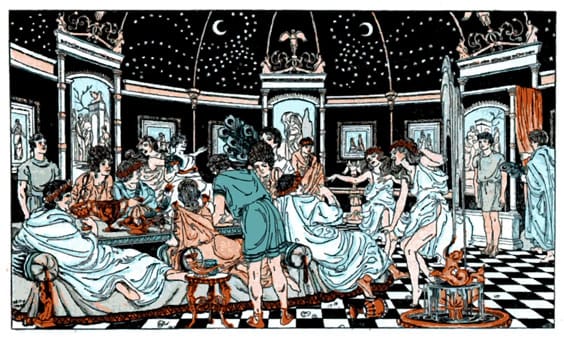Centuries of celebration

The history of Mardi Gras in the United States
By Chris Bonham
Lupercalia, Fastnachtkuchen, Karneval; are these names ringing any bells? No, probably not. What about Fat Tuesday? Mardi Gras? Aha! All of these names are variations of the label given to the season directly before the Catholic celebration of Lent.
In places such as New Orleans, this holiday is one of the most important holidays of the year. Mardi Gras is a time of festivities, partying, and parades for most people. But the United States is far from being the only country that celebrates this specific holiday. Belgium, Brazil, Canada, Columbia, Croatia, France, Germany, and
Guatemala are just a few of the countries that celebrate some form of Mardi Gras.
So where did this holiday that is celebrated in so many places around the world come from? The answer actually dates back all the way to the time of the Roman Empire. In those days, the Romans celebrated the day of Lupercalia. This holiday was a festival much like the modern form of Mardi Gras that we have today.
The holiday began its transformation when many of the Roman people converted to Christianity. The leaders of the new Church felt that they would cause great civil unrest by abolishing the holiday. Their solution: incorporate the festival into their own faith. Lupercalia became a time of merriment and celebration just before Lent.
When France, one of the countries where Mardi Gras is most widely celebrated, broke off from their Roman rulers, many in the country still celebrated their age old holiday of Lupercalia. They decided to change the name of the holiday to “Mardi Gras”, which means “fat Tuesday” in French. The celebration of Mardi Gras continued for centuries within France and her European neighbors.
Mardi Gras arrived in the United States in 1699, when Pierre Le Moyne d’Iberville was sent by King Louis XIV to defend the French territory of Louisiane, an area that comprised the modern day states of Louisiana, Alabama, and Mississippi.
Iberville and his troops arrived at the New World, and set up their camp on the first night about 60 miles south of where New Orleans stands today. The date was March 3, 1699 – the day that the French were accustomed to celebrating Mardi Gras. In honor of this fact, Iberville named the encampment Point du Mardi Gras.
In 1702, Iberville’s brother and one of the soldiers who had been with him on the 1699 expedition, a man named Jean-Baptiste Le Moyne de Bienville, founded the city of Mobile, Alabama. One year later, the formal celebration of Mardi Gras was instituted. The holiday spread to many other French cities.
Even with the acquisition of this land by the United States nearly one hundred years after the establishment of the city of Mobile, Mardi Gras had become an integral part of Southern tradition and the people continued to celebrate it.
Not much has changed since 1703. Mardi Gras is still celebrated in much the same way as it was on that chilly March evening 200 years ago. It is this connection to the people of centuries gone by that makes this holiday, and many others, so special.